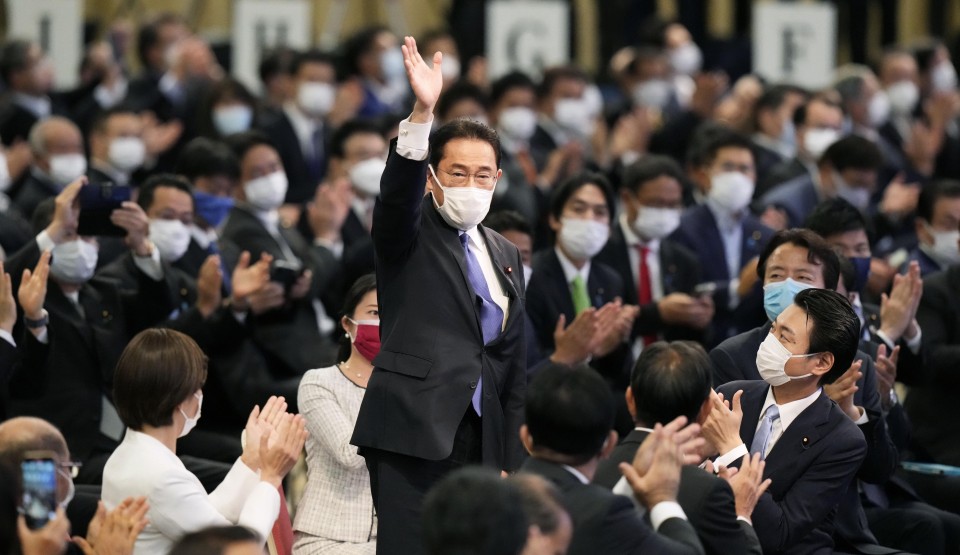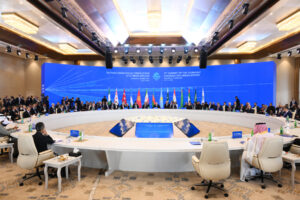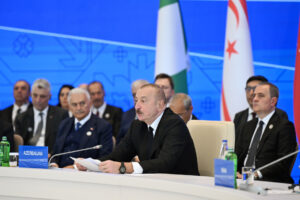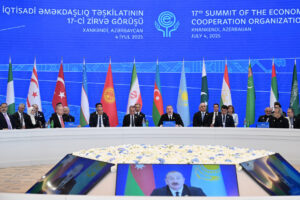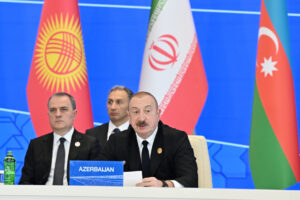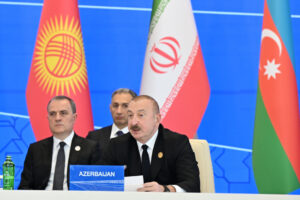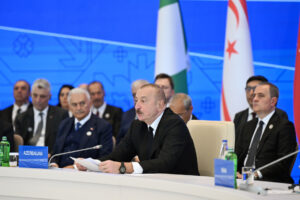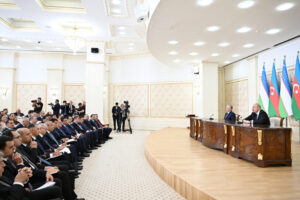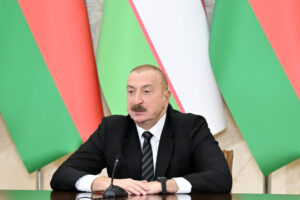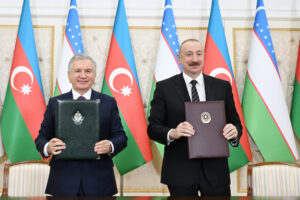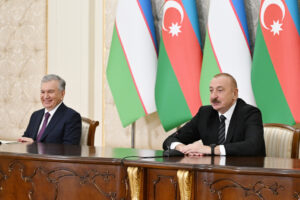Tokyo, 29 September, /AJMEDIA/
Former Foreign Minister Fumio Kishida won the ruling Liberal Democratic Party’s presidential election Wednesday in a runoff vote against vaccination minister Taro Kono, making him all but certain to become Japan’s next prime minister.
Kishida, who is set to succeed outgoing Prime Minister Yoshihide Suga next week, will be tasked with shoring up an economy battered by the COVID-19 pandemic and strengthening ties with the United States and other partners at a time when China increases its assertiveness in the Indo-Pacific region.
“We remain under a national crisis,” Kishida said after the vote, alluding to the possibility that the nation could enter its sixth wave of coronavirus infections. “We must strive and continue our coronavirus response and forge an economic package worth dozens of trillions of yen by the end of the year.”
Kishida also expressed his determination to safeguard universal values, such as democracy, ensure peace and stability in the region and increase Japan’s international presence by contributing to global challenges, including climate change.
“I will pursue diplomatic and security policies based on such determination and build a free and open Indo-Pacific region,” he said.
The new LDP chief called for unity among party members as he leads the party and junior coalition partner Komeito into a general election slated for November and next year’s election of the House of Councillors, the upper chamber of parliament.
Since the LDP-Komeito coalition holds a majority in both chambers of the Diet, Kishida, who will serve as LDP president through Sept. 2024, is now poised to be elected prime minister at an extraordinary Diet session that starts Monday.
Citing a host of challenges, such as Japan’s persistently low birthrate and the realization of a free and open Indo-Pacific, Kishida said he will start working at “full speed.”
As Kishida is the public face of the LDP, he will also need to assure the public of his leadership skills and accountability — qualities judged to be lacking in Suga.
Kishida vowed to “fulfill the government’s responsibility to explain to the people” about its decisions while carefully listening to their voices.
Kishida said he will seek to secure a majority in the House of Representatives together with Komeito in the looming general election and give LDP executive posts to his rivals in the leadership race so they can “fully exercise their abilities.”
He said he will announce a new party executive lineup, including the No. 2 post of secretary general, as soon as possible.
Two female candidates — Sanae Takaichi, a former communications minister, and Seiko Noda, the LDP’s executive acting secretary general — dropped out of the four-way race in the first round of voting earlier Wednesday.
Among 427 valid votes in the runoff, Kishida secured 257, defeating Kono, who garnered 170, after the first round of voting did not produce a decisive winner.
In the first round involving 762 votes, Kishida, the most popular among LDP Diet members, won 256 votes, while Kono, the favorite among the rank-and-file LDP members, secured 255 votes. Takaichi and Noda got 188 and 63 votes, respectively.
Kishida, a moderate with a steady hand who heads the LDP’s liberal-leaning faction, gained the backing of many veteran lawmakers in what became his second bid for the party presidency. He lost out to Suga in the previous race last year.
While party factions played a decisive role in the previous election, with their members bound to vote for a particular candidate, this was not the case in the latest election, as most intraparty groups allowed their members to make independent choices, at least in the first round.
The election came after Suga announced on Sept. 3 that he was stepping down amid mounting criticisms about his government’s coronavirus response.
During campaigning for the leadership race, Kishida, who served as foreign minister and the LDP’s policy chief under former Prime Minister Shinzo Abe, pledged to shift from the neoliberal policies of previous administrations and make sure ordinary people can enjoy the benefits of growth.
Kono, seen as a reformist who has frequently topped media opinion polls on who is most fit to be prime minister, attracted support from Suga, former Defense Minister Shigeru Ishiba and relatively young LDP lawmakers, including Environment Minister Shinjiro Koizumi, as well as rank-and-file party members.
Campaigning on a promise to reform Japan’s pension system, Kono fell short of victory without touching on how much the consumption tax would have to be raised to finance such an initiative.
Some also viewed him as having backed away from his previous stance of breaking free from nuclear power generation.
Backed by former Prime Minister Shinzo Abe and hawkish nationalists, Takaichi advocated “Sanaenomics,” her policy mix featuring bold monetary easing and investment in crisis management and growth areas.
Takaichi regularly visits the Yasukuni shrine, a source of tensions with China and South Korea because the Tokyo Shinto shrine enshrines the war dead along with convicted war criminals.
Noda, known as a liberal in the conservative party, struggled to attract support within the party beyond the 20 lawmakers who gave her the prerequisite endorsement needed to run in the election.
This prompted her to admit days ahead of the election that the winner would be “anyone but me.”
Noda placed priority on care for the vulnerable, such as children and people with disabilities.

